Story at a glance
- Canada’s movement toward sustainable development is taking place across the country, from Ontario to British Columbia.
- These five projects, including a rural passive house for hospital staff and LEED certified skyscrapers, show how innovative, efficient solutions offer sustainable living in Canada.
Canada has taken on sustainable living with enthusiasm. While big cities like Vancouver and Toronto find new ways to innovate in skyscrapers and developments, even rural towns are making significant progress in sustainable design.
Toronto hopes to be one of the world’s most sustainable cities, with city-wide initiatives that encourage green building and sustainable innovation. At a city block scale the city aims to create infrastructure for renewable energy, while at a neighborhood scale the city is using thermal energy to help reduce energy use. Toronto property developers are taking a strong turn toward sustainability, and even the individual citizens participate in making Toronto a sustainable city by finding responsible forms of transportation. Cycling is extremely popular and well-established in Toronto, with bike lanes and parking a feature of most streets.
Likewise, Vancouver has a number of sustainable initiatives that make it a similarly environmentally driven city. Vancouver’s Greenest City initiative includes goals like banning new buildings with GHG emissions by 2030 and becoming waste-free by 2040. Just like Toronto, Vancouver citizens and government alike invest in neighborhood-wide plans to build infrastructure for renewable energy. The citywide initiatives all hope to make Vancouver an economically, socially thriving environment for its citizens.
But throughout Canada, these ideals and goals are repeated on every scale and in various combinations. The country as a whole defines sustainable development goals and actions with their Federal Sustainable Development Strategy. Although Prime Minister Justin Trudeau has received a combination of praise and criticism for his follow-through on environmental promises in recent months, the growing trend of sustainable building and energy initiatives in Canada shows marked improvement on a smaller scale.
These five projects show how sustainable living in Canada is developing in Toronto, Vancouver, and beyond.
1. The Duke Apartments
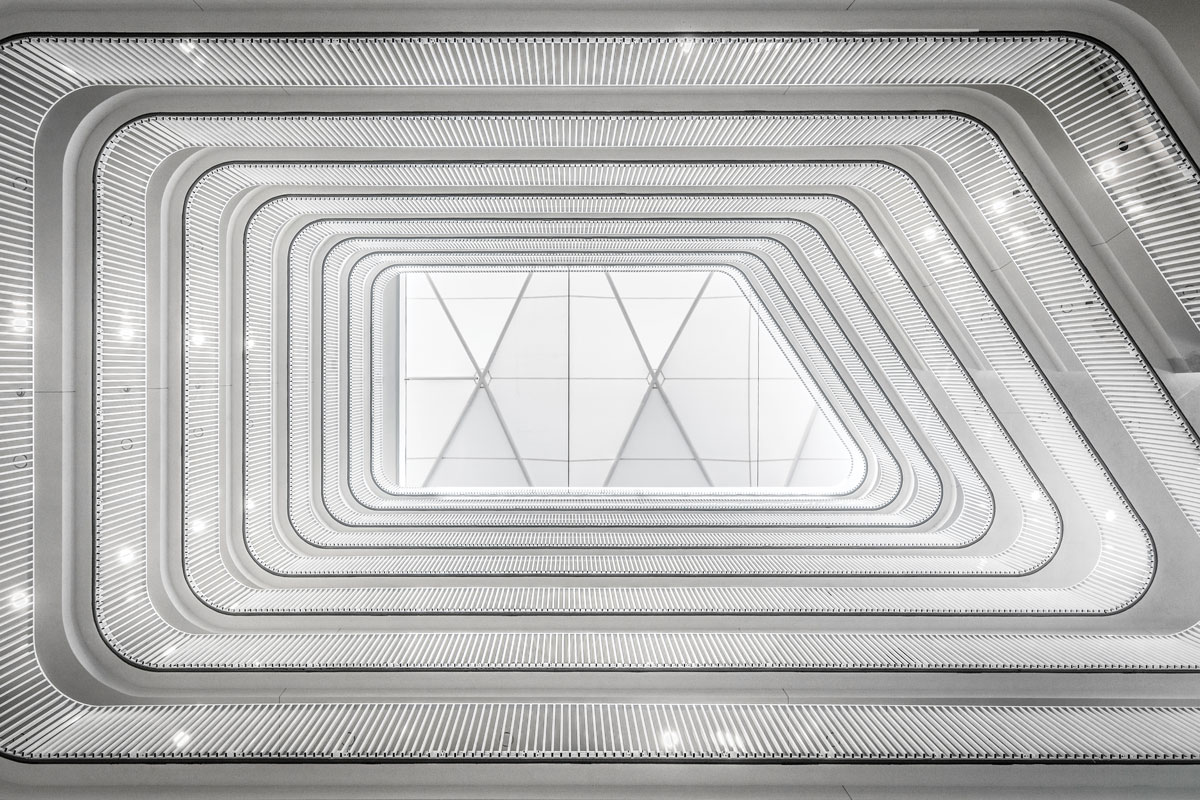
Photo by Michael Elkan
This bright and airy, LEED Gold certified apartment building offers affordable housing in the heart of Vancouver. In addition to reaping the benefits of its location, central to arts, culture, open space and transit, the building offers amenities including a bike maintenance space and car share program.
Designed by Acton Ostry Architects, the apartments line the exterior of the building while air circulates through a central atrium, animated with the colorful doors to each apartment. “[This layout] achieved a higher density of dwelling units in a lower building form. The same density in a traditional double-loaded corridor apartment building set back from the lot lines would have required an additional four stories and would have been approximately 30% higher,” principal architect Mike Ostry told us.
Other sustainable living features of the Vancouver apartments include enhanced energy and water efficiency, environmentally responsible building materials, a focus on indoor air quality and a rooftop green space.
2. Rosedale Home
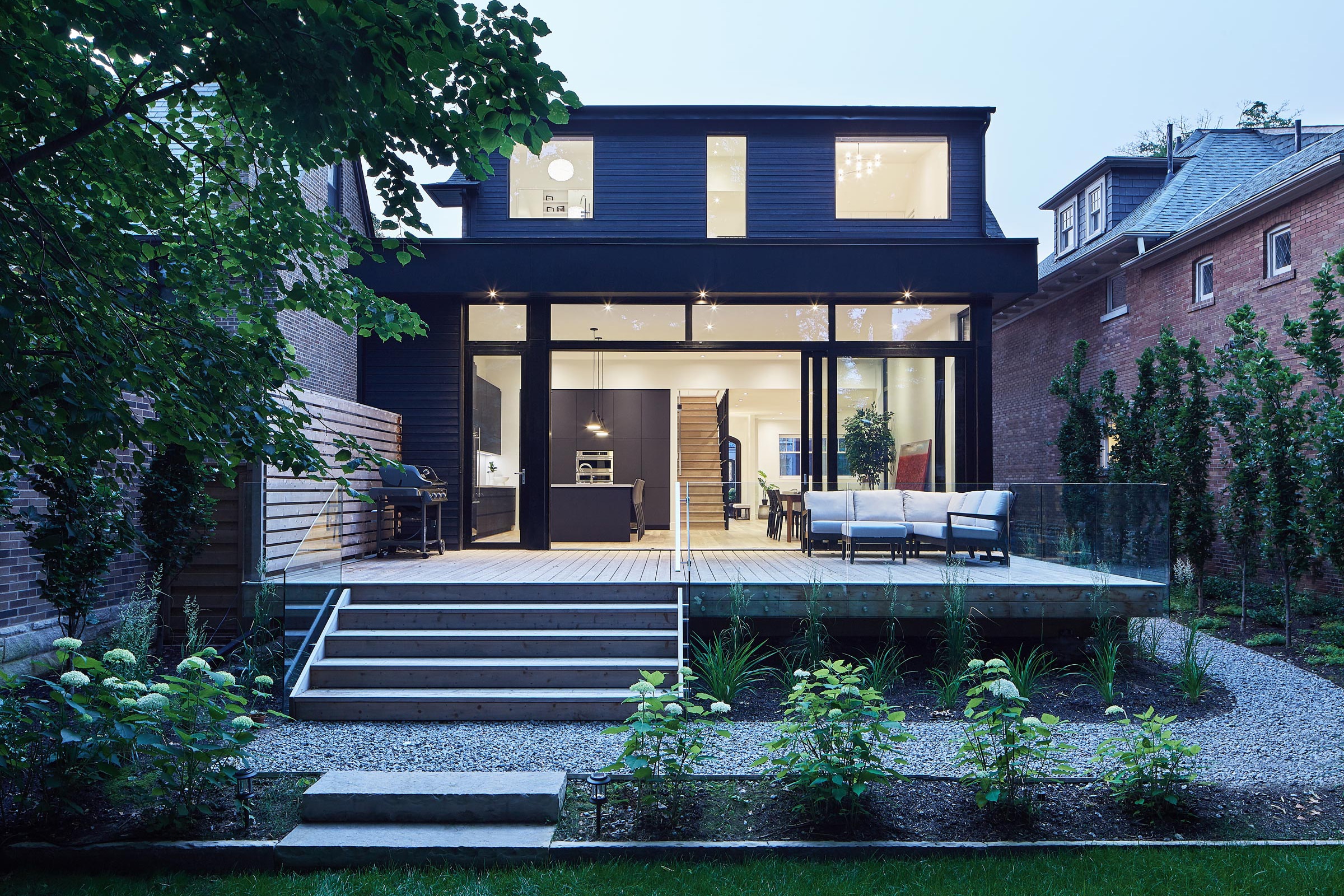
Photo by Nanne Springer
Inland from Lake Ontario, Toronto’s Rosedale is a neighborhood full of historic homes, completely unchanged from the street view. In 2018 Solares Architecture remodeled this gorgeous Rosedale home to be an environmentally conscious modern classic, drawing on its original facade to bring history and innovation together with a sustainable twist.
Maintaining the original facade and existing structure of the house means the architects were able to preserve the embodied carbon of the structure. With updated features like modern windows and clean materials and interior sightlines, the space feels open and still connected, both indoors and out.
“I think a connection to the outdoors is always important,” Solares architect Tom Knezic told us. “It’s something contemporary residential designers should always be looking at. We really like having a transition space so you’re not just stepping out onto the lawn. You’re going from an indoor space to the deck, which has a connection to the outdoors, and then stepping off the deck into the yard.”
3. Monde Condominiums
-
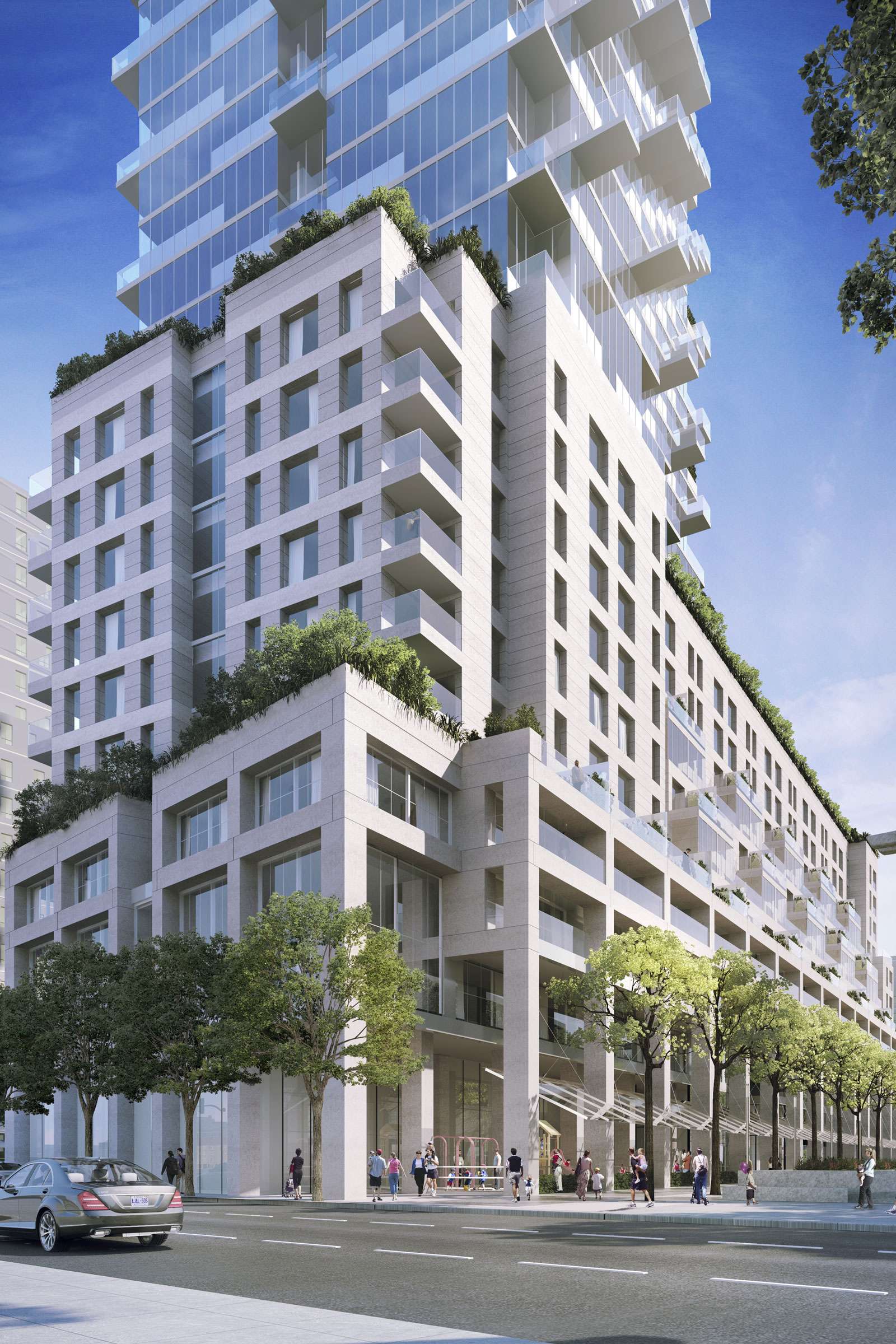
- Rendering Courtesy of Safdie Architects
-
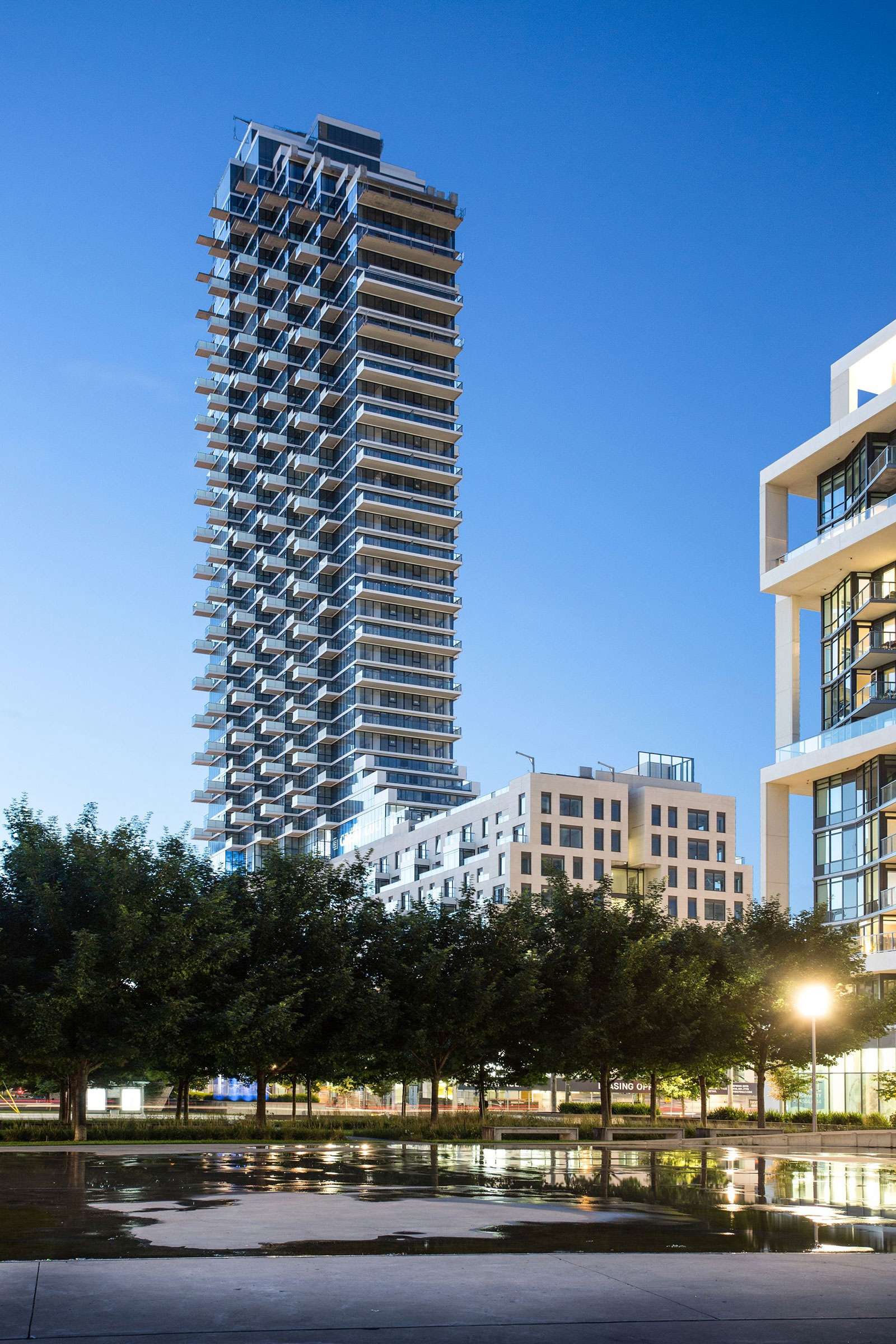
- Rendering Courtesy of Safdie Architects
Over 25 years, Waterfront Toronto is slowly developing community spaces across the city’s waterfront with sustainability at the forefront of design. One of the first of the developments to be unveiled in 2014 is the Monde Condominiums in Toronto’s East Bayfront neighborhood. Monde offers 516 suites in its 40-story structure and is centrally located for day-to-day convenience. The high-rise condominiums aim for LEED Gold certification with sustainable technologies and impressive cantilevered balconies.
To achieve these goals, the developer, Great Gulf, promises low-flow plumbing fixtures that reduces water consumption by up to 40%, a rainwater collection system that reuses water for the building’s evaporative cooling, and innovative heat-recovery ventilators that uses heat from residents’ bathroom exhaust fans to heat their units. The design also includes low-VOC paints, adhesives, and flooring; daylight maximization; an on-demand fresh air system; and a “master kill switch” that allows residents to turn off all the lights in their suite at once on the way out the door.
Alongside Monde, the development of Toronto’s waterfront is well underway with projects ranging from apartment/condo buildings like Monde to flood protection areas and community parks.
4. 3 Civic Plaza
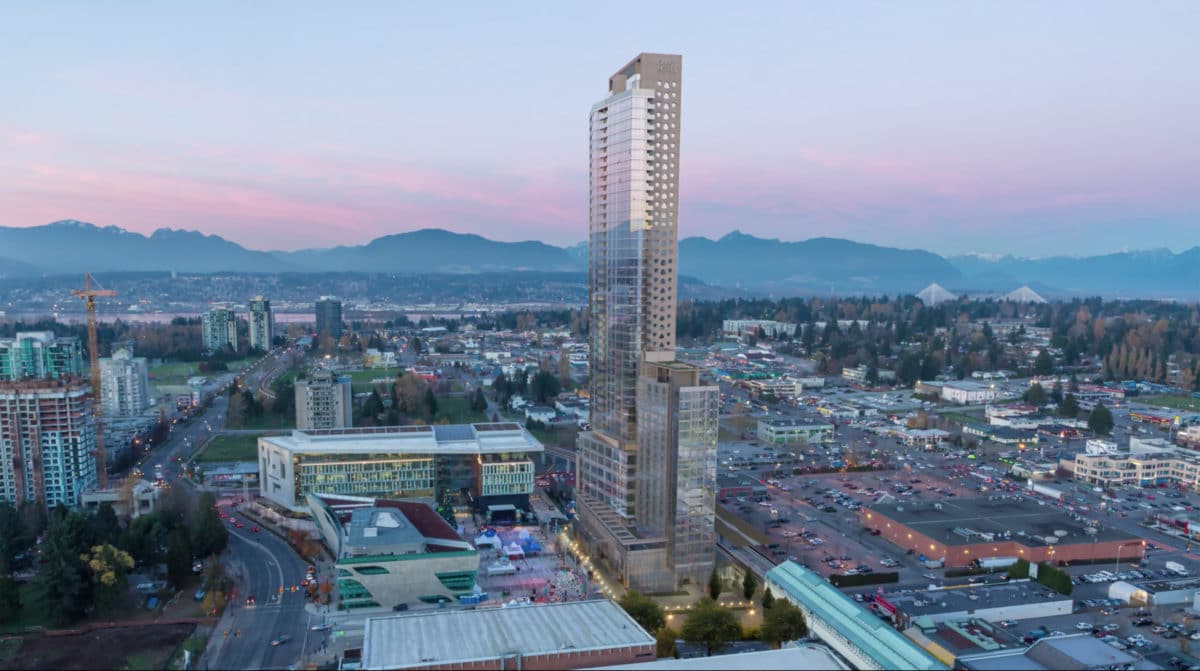
Courtesy of ZGF Architects
3 Civic Plaza in downtown Surrey, British Columbia is actually a 52-story multi-use building designed by ZGF Architects, but it includes more than 300 residential suites as well as a Marriott hotel, Kwantlen Polytechnic University’s urban campus, a rooftop garden, a modern fitness center, and more. The towering, useful building creates an example for sustainable living in Canada with inventive high-rise solutions.
The building utilizes stack effect ventilation so each apartment has access to fresh air, hydronic heating and cooling systems, operable windows, blinds, and passive natural ventilation, all selected through intuitive design research. The residential suites start at 1050 square feet, and offer one to three bedrooms and living spaces in an open and adaptable floorplan. With premium, Energy Star-rated appliances and sophisticated climate control systems, the apartments are comfortable and sustainable at once.
5. Bella Bella Passive House
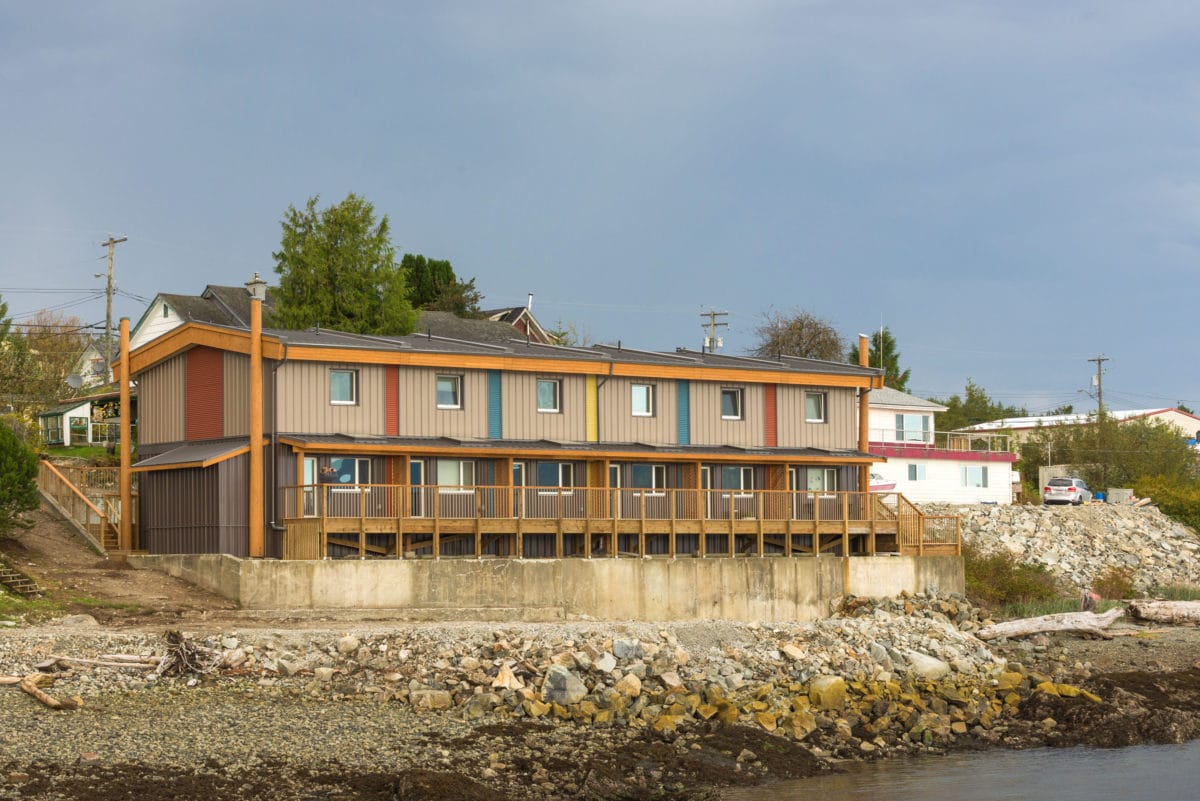
Courtesy of Vancouver Coastal Health
After the existing hospital staff housing burnt down on a tiny British Columbia island, the plan for new housing had to get creative to solve the issue of building with the stringent goal of being a passive house. Seeing as how the island is only accessible by sea, the development team decided to experiment with prefabricated homes for hospital staff at this remote branch of Vancouver Coastal Health. In just nine months, the prefab structure was designed, built, tested, transported, and installed in Bella Bella.
The prefab house is made up of six, two-story attached townhomes full of Passive House strategies including mineral wool, fiberglass insulation, and metal cladding built to Passive House standards, airtight windows, split-system heat pumps, and heat and energy recovery ventilation units. “On one of the coldest nights of the year in Bella Bella, the occupants can still be kept cozy with just 600 watts of energy—that’s the equivalent of six incandescent light bulbs,” Glen Garrick, sustainability manager, transformation and innovation for VCH, told gb&d.



